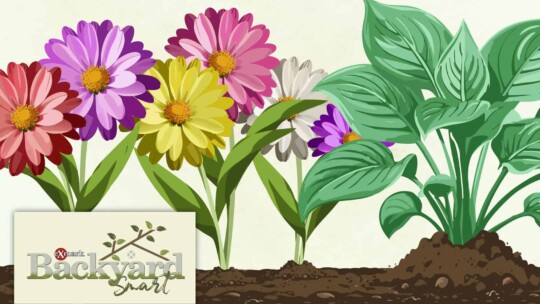Join landscape design pro and Done-In-A-Weekend Projects video host Doug Scott to learn how to build a simple rain barrel for irrigation of your containers or small gardens. They’re a great supplement to traditional irrigation systems for hydrating yard plants and gardens. Depending on your climate, rain barrels can potentially provide enough water to sustain your plant materials while minimizing your water bills.
How to Collect Rainwater
The average size home can shed 600 gallons of water with just one hour of moderate rain fall. Plus, you should be able to save about 80% of this rain water for irrigation.
Utilizing rain barrels to collect rain water is probably the most common water collecting method. You can find rain barrels at your local home improvement store, online, or you can construct one yourself as we do in the above video. Rain barrels come in different sizes so you can choose one that will accommodate the usual amount of rain for your area. If you happen to have a lot of rainfall, choose a large rain barrel. Then, you’ll need to be sure that the top of the barrel has a cover on it to keep mosquitos, animals, and children out. Rain barrels also have a spout at the bottom of them so the rain water can flow out. Simply fill up smaller containers or hook up your hose to the spout.
Rainwater collection systems are comprised of big tanks that are underground. When it rains, the water is directed to the tanks, and when the rainwater needs to be used, there is a filter and a pump that pumps the water out for your needs. This type of collection system is much pricier and will need to be installed by a professional.
Rain Barrel Irrigation Tips
- ONLY use collected rainwater to irrigate your lawn and garden. Collected water should not be consumed unless it has been properly filtered and tested for potability.
- Place your barrels underneath, or adjacent to, the downspout you intend to use as your primary rainwater source. Do not place near septic services, utility lines, or HVAC components.
- Don’t leave any rain barrel openings uncovered, because openings can allow debris to get into the storage system, and can be a safety hazard to pets and children.
- Rain barrels should have an overflow port to enable excess rainwater to easily flow out of the system once the barrel is full.
- Be sure to create a clear path for water to drain if the barrel fills beyond its capacity. To accomplish this, your can either layer pea gravel on the ground beneath the storage tanks, or connect the overflow port to the underground drainage system previously being used.
DIY Rain Barrel Materials List
- 55-gallon water barrel or large garbage can with lid
- Tape measure
- Spigot kit with bulkhead fitting
- Drill with appropriate circular saw attachment
- Mesh screen
- Extension cord
- Waterproof silicone sealant
- Downspout diverter kit/materials
Rain Barrel Irrigation Build Steps
- Prepare your barrel by drilling a spigot hole approximately four inches up from the bottom of the barrel. Also, drill an overflow hole approximately two inches from the top of the barrel.
- Install the bulkhead fitting into the lower hole. Then, install the spigot and ensure it’s oriented at the right angle.
- Seal the spigot and bulkhead fitting with waterproof silicone sealant, making sure it dries for the recommended amount of time before exposing it to water.
- Either cut another hole on the backside of your barrel to accommodate your diverter and its bulkhead fitting (this will connect into your downspout), OR (if you’re using a trashcan) cut a hole in the lid that roughly matches the shape of your downspout (you can trace the outline of the downspout on the lid to use as a cutting guide), then place the barrel under your downspout. Make sure the overflow hole is oriented so that water flows away from your house.



